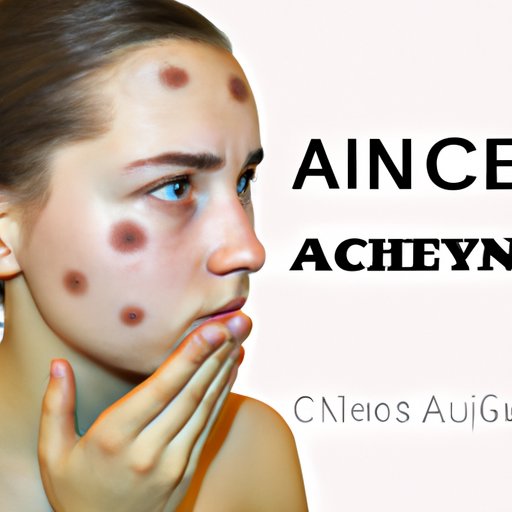
I. Introduction
Cystic acne is a severe form of acne that can be painful, stubborn, and difficult to treat. Unlike regular pimples, cystic acne is much deeper and can occur on the face, back, chest, and even arms. In this article, we’ll dive into the differences between regular pimples and cystic acne, why cystic acne can be so painful and difficult to get rid of, and provide some actionable steps readers can take to alleviate and prevent cystic acne.
II. Causes of Cystic Acne
Cystic acne is typically caused by hormonal imbalances, genetics, and poor skincare routine. Hormonal imbalances are often the primary cause and occur when the body produces too much oil, leading to blocked pores. Genetics can also play a role in people who are more prone to cystic acne. Finally, maintaining a poor skincare routine can exacerbate cystic acne by irritating pores or causing breakouts.
III. Tips for Preventing Cystic Acne
While there isn’t a 100% effective way to prevent cystic acne, there are a few things readers can do to minimize breakouts. Eating a healthy diet full of vegetables, fruits, and whole grains can help balance hormones naturally. Drinking plenty of water can also help flush toxins out of the body, leading to clearer skin. Finally, avoiding harsh skincare products can prevent further irritation.
IV. Home Remedies for Cystic Acne
People interested in home remedies for cystic acne can try using tea tree oil, which has antibacterial and antifungal properties that can help reduce inflammation and kill bacteria. Using a warm compress can also help alleviate pain and reduce swelling. For a more potent solution, readers can try applying a benzoyl peroxide spot treatment, which can be found at most drugstores.
V. OTC and Prescription Treatments
OTC and prescription treatments can help alleviate and prevent cystic acne. Topical retinoids can help exfoliate skin, unclog pores, and reduce the appearance of cystic acne. Oral antibiotics can kill bacteria and reduce inflammation. While these treatments can be helpful, it’s essential to consult with a dermatologist before starting any new treatment, as some treatments may not be appropriate for everyone.
VI. Lifestyle Changes
Lifestyle changes can also help alleviate and prevent cystic acne. Reducing stress levels, getting enough sleep each night, and avoiding harmful habits like smoking can all contribute to clearer skin. Additionally, keeping hair and phones clean to prevent transfer of bacteria can also be helpful.
VII. Conclusion
Cystic acne can be frustrating to deal with and may lead to feelings of self-consciousness. While there isn’t a one-size-fits-all solution for cystic acne, there are things readers can do at home and with the help of a dermatologist to clear up their skin. Whether it’s trying out home remedies or making lifestyle changes, consistent efforts can lead to clearer, healthier-looking skin.
As someone who has dealt with cystic acne in the past, I understand how difficult it can be. However, with patience and perseverance, it is possible to find a solution that works for you.





